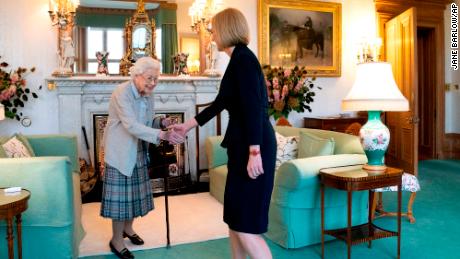
London – Liz Truss officially became the third female prime minister in British history on Tuesday following a transfer of power from her predecessor, Boris Johnson, who bowed out in a defiant speech following a series of scandals.
Truss, 47, enters office after winning the most votes in the Conservative Party leadership contest to replace Johnson, who announced his resignation in July. Her appointment fills a monthslong leadership void that the United Kingdom has endured as its worst economic crisis in decades has spiraled.
Truss’s to-do list is long, with the country facing a deepening cost-of-living crisis, a crumbling healthcare service, and a seemingly endless wave of labor strikes.
The most urgent problem Truss must address is the skyrocketing cost of energy, which could unleash a wave of business closures and force millions of Britons to choose between putting food on the table and heating their homes this winter. Experts have warned that people will become destitute and cold-weather deaths will rise unless something is done fast.
The Bank of England anticipates that inflation in the UK will jump to 13% as the energy crisis intensifies, and that the country will enter recession before the end of the year. Goldman Sachs has warned inflation could even reach 22% if natural gas prices “remain elevated at current levels.”
Truss said Monday that she would “deliver a bold plan to cut taxes and grow our economy.
I will deliver on the energy crisis — dealing with people’s energy bills but also dealing with the long term issues we have on energy supply. And I will deliver on the National Health Service.”
Truss was formally installed as prime minister on Tuesday after visiting Queen Elizabeth II at Balmoral Castle, one the royal estates in Scotland, in a break with norms.
Traditionally, the Queen invites a new prime minister to form a government during an audience at London’s Buckingham Palace — but for the first time in her 70-year reign, the monarch chose not to travel to the British capital as a precaution due to her mobility issues.
Truss’s meeting with the monarch took place shortly after Johnson met with the Queen to officially resign as prime minister.
In his farewell speech outside Downing Street early Tuesday, Johnson touted his achievements, made no mention of failures, and pledged to support Truss’ new government.
“Like Cincinnatus, I am returning to my plow, and I will be offering this government nothing but my fervent support,” referring to a Roman statesman who according to legend devoted himself to the republic during times of crisis. “It’s time for us all to get behind Liz Truss and her team and her program.”
After flying back to London, Truss is set to be welcomed at Downing Street by her new staff. Then she will be asked to sign the UK’s famous letters of last resort — instructions for military leaders on what to do if the government falls or is taken out in a nuclear attack — before she begins appointing a cabinet.
Truss will also be expected to outline her plans for dealing with the UK’s urgent cost-of-living crisis as soon as possible. Her political opponents, both inside and outside the Conservative Party, will not deem it acceptable if the new leader fails to outline specific policies in the next 48 hours.
Truss will then face the leader of the opposition Labour Party, Keir Starmer, for her first Prime Minister’s Questions in the House of Commons on Wednesday afternoon, which will be seen by her team as an important moment to set the tone of her leadership.
Particular attention will be paid to how much Truss deviate’s from Johnson’s legislative agenda, particularly as she was seen as the Johnson continuity candidate in the leadership race.
As reported by CNN
